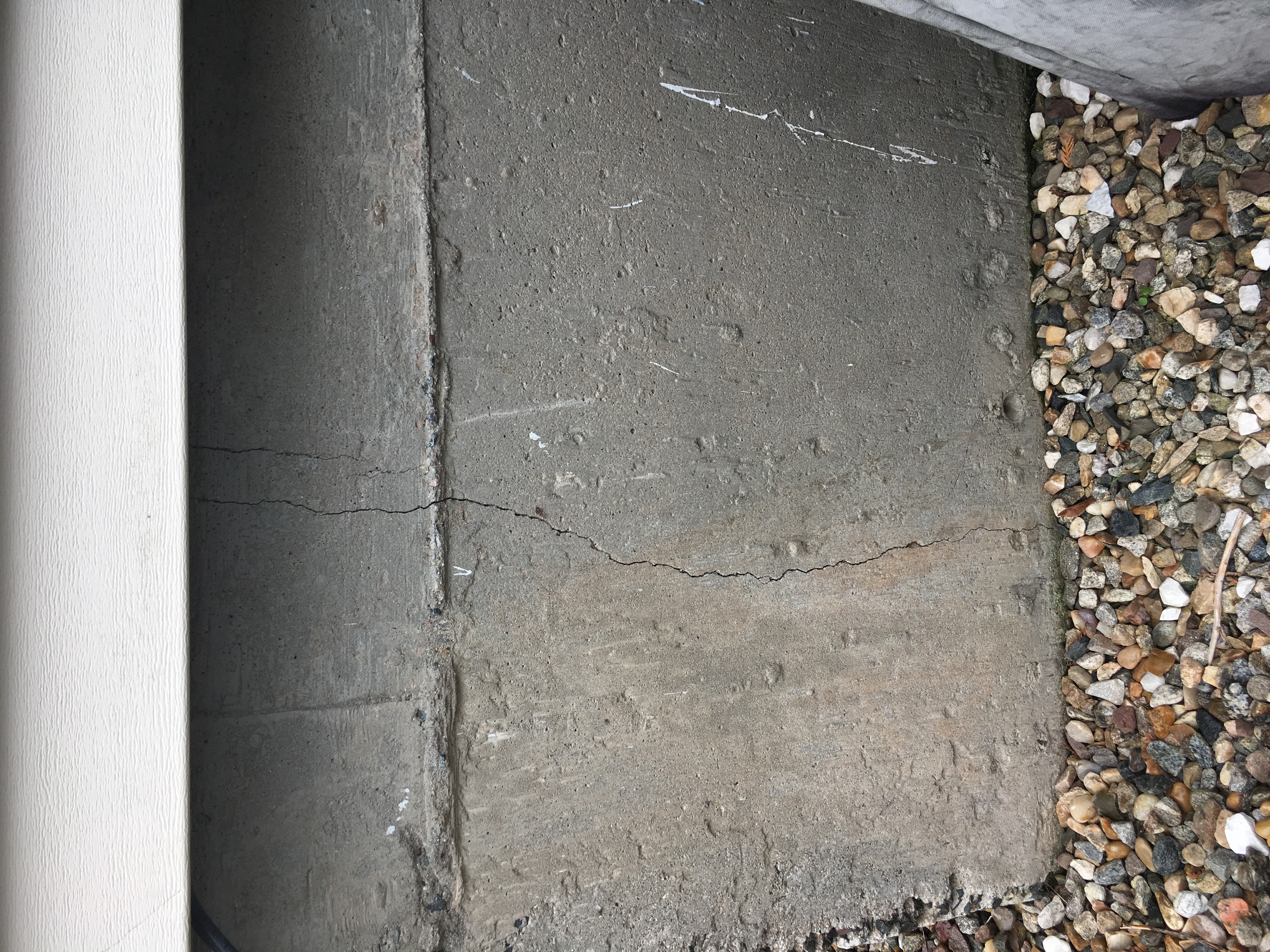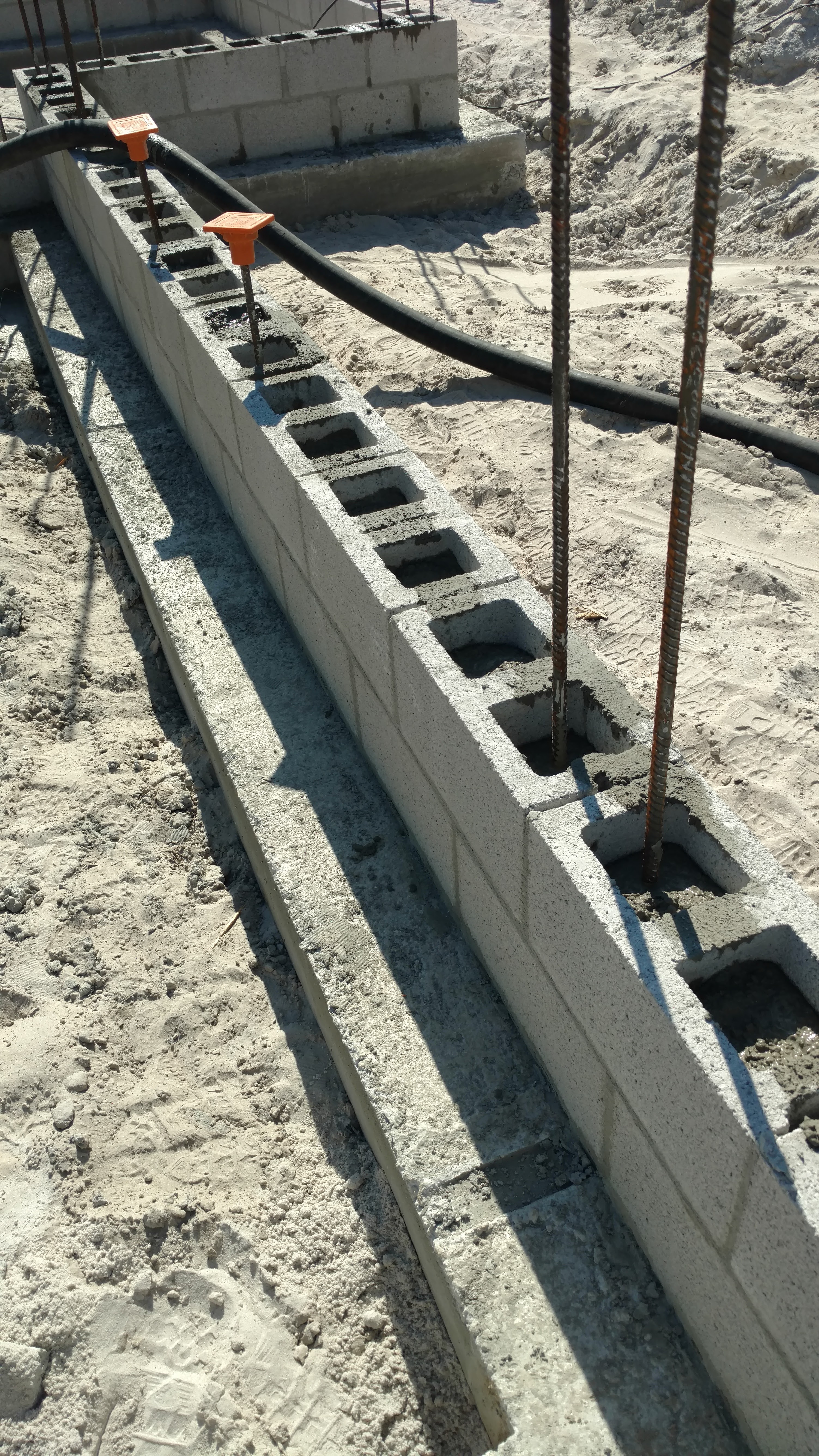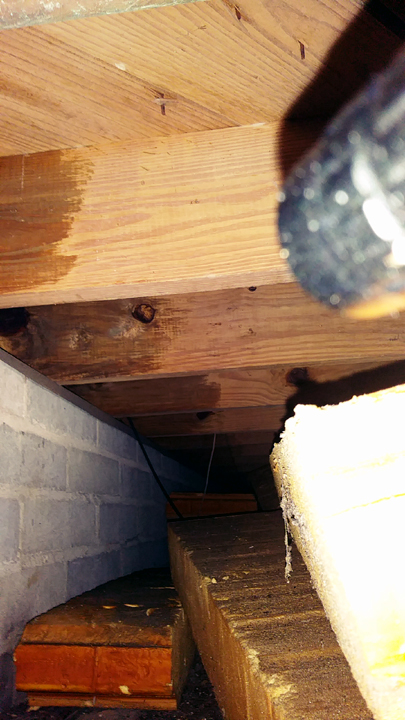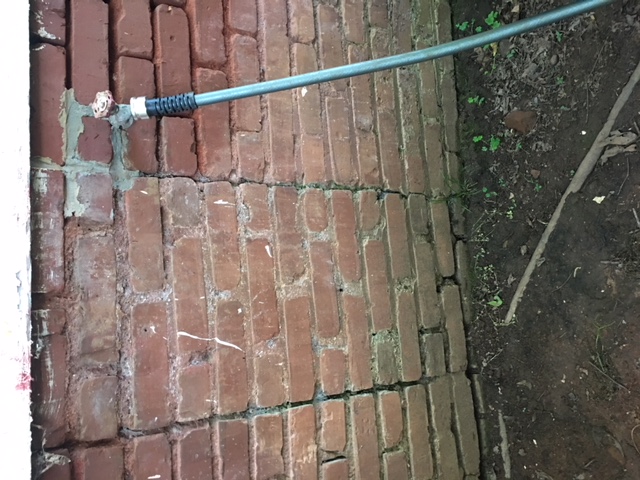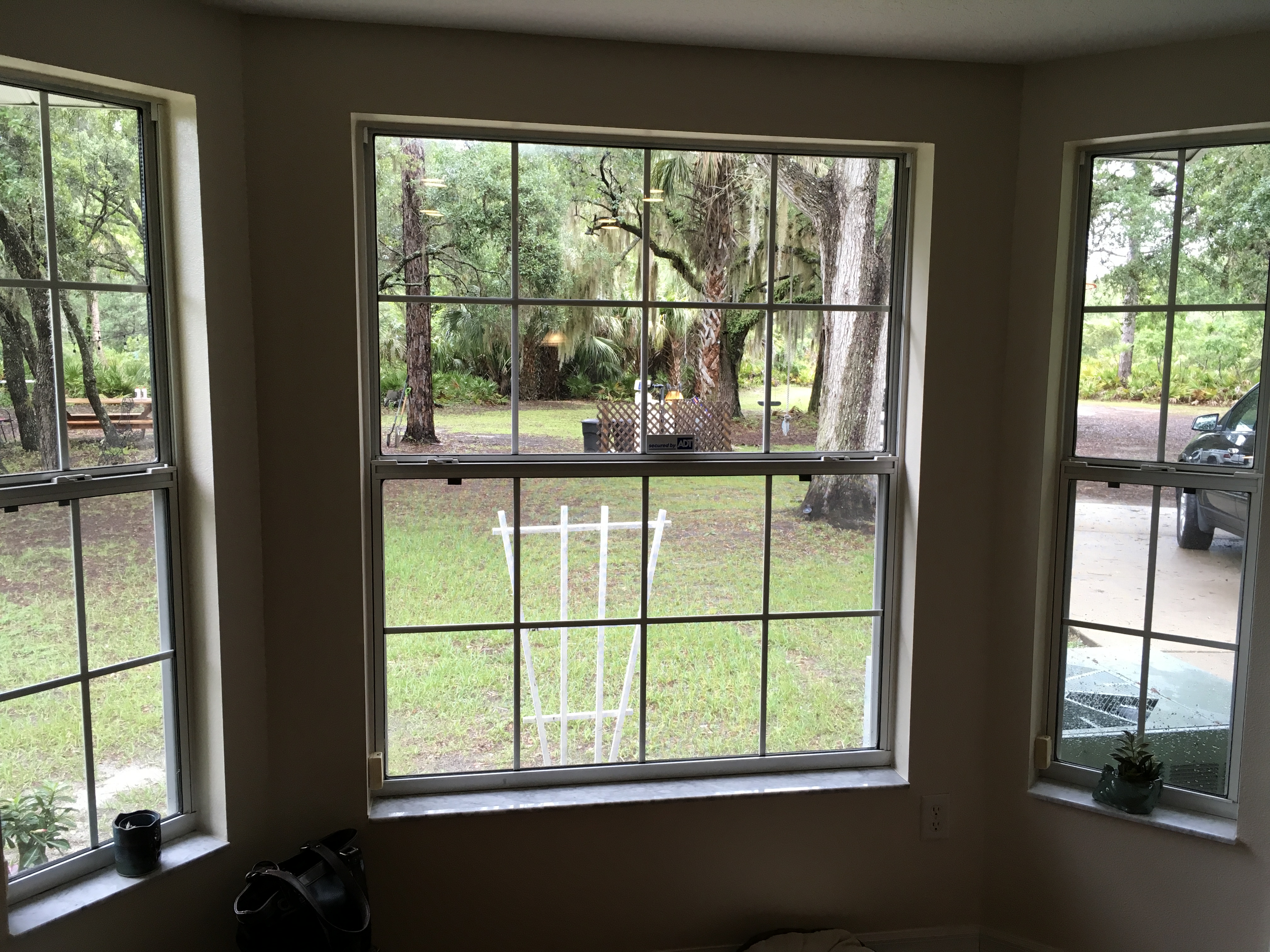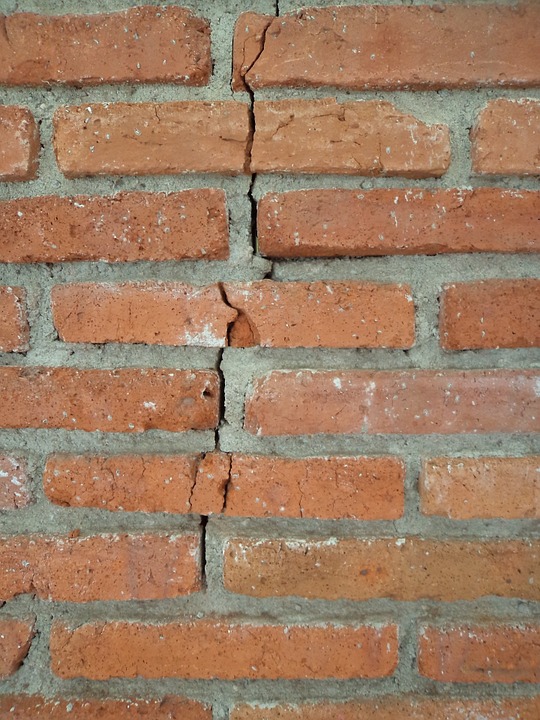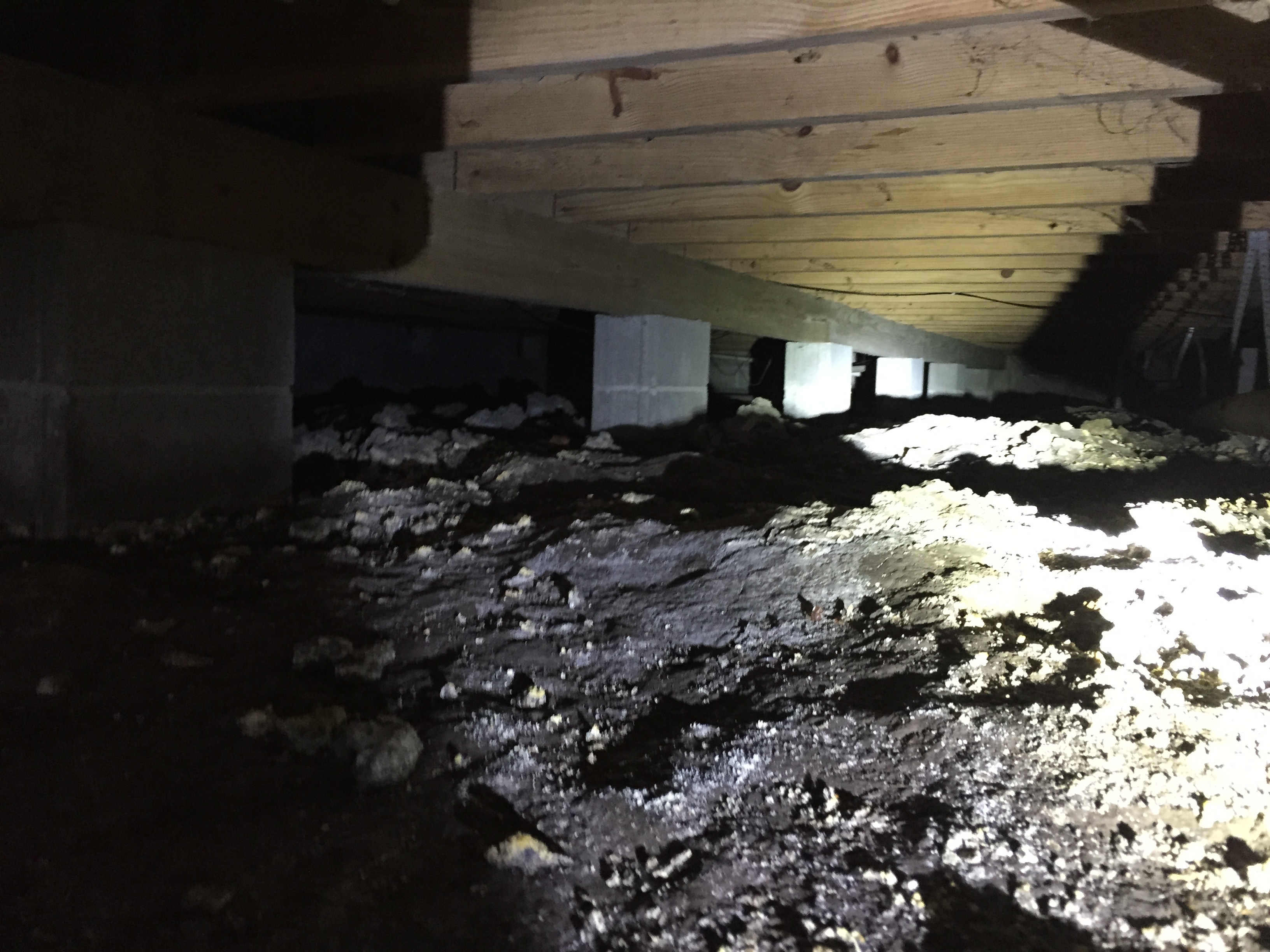The above images shows a vertical settlement crack, this vertical crack tapers off to a hairline crack. This hairline crack is located on the southern left corner of the house and it was likely caused by soil heaving due to the frost up in the northeast.
I read the article on precast concrete foundation and wall panels. Precast concrete foundation and wall panels come in many forms. Some come in steel-reinforced concrete ribs that run vertically and horizontally in the panels. Others are solid precast concrete panels. They are cured in a controlled environment. They reduce weather delays and can be erected in four to five hours reducing the installation process by 1/6th the time needed for a formed concrete wall.
This stem wall and footer are for a residential application. The footer has steel rebar reinforcement. The stem wall block cells are filled with concrete. The footer is twenty four inches wide to help spread the load from the eight inch wide block stem wall.
Basement walls and foundations are to have components incorporated into the construction to allow for proper protection from and drainage of ground water. The building elements used can be drainage rock, drainage pipe and mats or panels that allow water to drain to the bottom of the wall. It is very important that the drainage water be given a place to flow away from the residence.
As far as the eye can see the masonry support wall for the floor joists seems intact. I see no moisture or cracking problems. What I did notice is the discoloration to the left side of the floor joists where they intersect the support wall. Along the top of the wall is a metal protective plate but the discolored joists have me wondering. Right along that wall and to its left (not shown) rests the bathroom. Im wondering if there might be some kind of leak that has spread along the flooring and is now traveling to the joists. Further inspection is required to address this potential leakage.
From Mastering Roof Inspections: Flashing Part 4
Kickout Flashing: Its purpose is to aid in the prevention of moisture intrusion of the wall. The can be pre-made of made on site, which is usually made of sidewall flashing. Usually brick or concrete block will not need the benefits of a kickout flashing when sidewall flashing doesnt penetrate the wall; but thats not true of other roofing covering materials such as asphalt shingle. The size of the kickout is more of a presumptive thing as most wall covering manufacturers leave off that information.
I Read The article “Structural Design of Foundations for the Home Inspector”
A foundation transfer the load from the structure to the ground. A foundation in residential construction may consist of a footing, wall, slab, pier, pile, or a combination of these elements.The most common residential foundation materials are concrete masonry and cast-in-place concrete.Pile foundations are commonly used in coastal flood zones to elevate structures above flood levels.
In the photo below we can see a horizontal cracking from a concrete block foundation. It may be caused by improper back filling. and as we know this is a potentially serious problem. i will recommend a inspection from a structural engineer for further repair
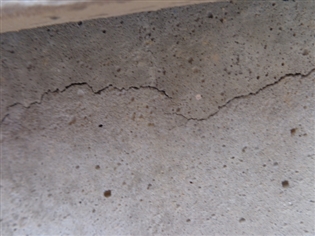
For my essay on inspecting foundation walls and piers, I have chosen this one of an older home with brick piers and brick walls. The mortar in the joints of these piers and walls is spalling or missing. These deficiencies should be corrected and repointed sooner than later because of the opportunities for structural failure to happen.
For my essay, i’m going to speak about poured foundation walls and deficiencies. Often times it is easy to tell if there are structural issues with poured walls. An inspector can easily tell if the structure is in danger of being compromised if they report sweeping or bowed cracking in the poured foundation walls.
I inspected the windows in my new home. The windows are constructed of aluminum and are single hung and double pane. The caulking around the windows on the interior and exterior was intact and not cracking. All of the windows in the home opened and closed easily.
I read an article on inspecting ceiling fans. The article outlines the different parts or components of the fan and common defects. A few of the defects could be fan falls, fan wobbles, and improper clearance. In a residential application, no part of the fan blades should be less than 7 feet from the floor.
Cracks can form in both poured concrete and block foundations. As concrete and mortar between blocks dry, it shrinks. Cracks often originate in 90-degree corners, so check those places carefully. Stepped cracks along block foundations or brick walls may be caused by upheaval. The best way to stave off major repair work is to monitor the crack width.A horizontal crack that appears in the bed joint of a brick or concrete block wall should not be ignored. This signals a major breakdown. Pressure of the soil behind the wall has pushed it to a point of bending or breaking. Corroded wall ties, an inadequate number of ties or wind pressure can also cause the wall to bend
Efflorescence is the white chalky powder that you might find on the surface of a concrete or brick wall. It can be a cosmetic issue, or it can be an indication of moisture intrusion that could lead to major structural and indoor air quality issues.
The moisture that creates efflorescence often comes from groundwater, but rainwater can also be the source. Efflorescence alone does not pose a major problem, but it can be an indication of moisture intrusion, which may compromise the structural material.
Masonry Cracking
Cracks may appear along the mortar joints or through the masonry units. Cracking can result from a variety of problems:
#Differential settlement of foundations;
drying Shrinkage
#Expansion and contraction due to ambient thermal and moisture variations.
#Improper support over openings, the effects of freeze-thaw cycles.
#Corrosion of iron and steel wall reinforcement.
#Differential movement between building materials.
#Expansion of salts
#The bulging or leaning of walls.
Masonry Cracking
Cracks may appear along the mortar joints or through the masonry units. Cracking can result from a variety of problems:
#Differential settlement of foundations;
drying Shrinkage
#Expansion and contraction due to ambient thermal and moisture variations.
#Improper support over openings, the effects of freeze-thaw cycles.
#Corrosion of iron and steel wall reinforcement.
#Differential movement between building materials.
#Expansion of salts
#The bulging or leaning of walls.
In the above image is a vapor barrier in a crawlspace. The barrier is a 6-mil ply. The vapor barrier has proper overlapping and adequate coverage. Vapor barriers must be installed in crawlspaces where wood beams or other structural components touch the ground.

The image I chose out of the gallery is a column base with leveling nuts. The image shows where the base plate is connected to the steel base plate with a non shrinking grout and anchor bolts. to hold the steel column in place.
test test test test test test test test test test test test test test test testtest test test test test test test testtest test test test test test test testtest test test test test test test testtest test test test test test test test
